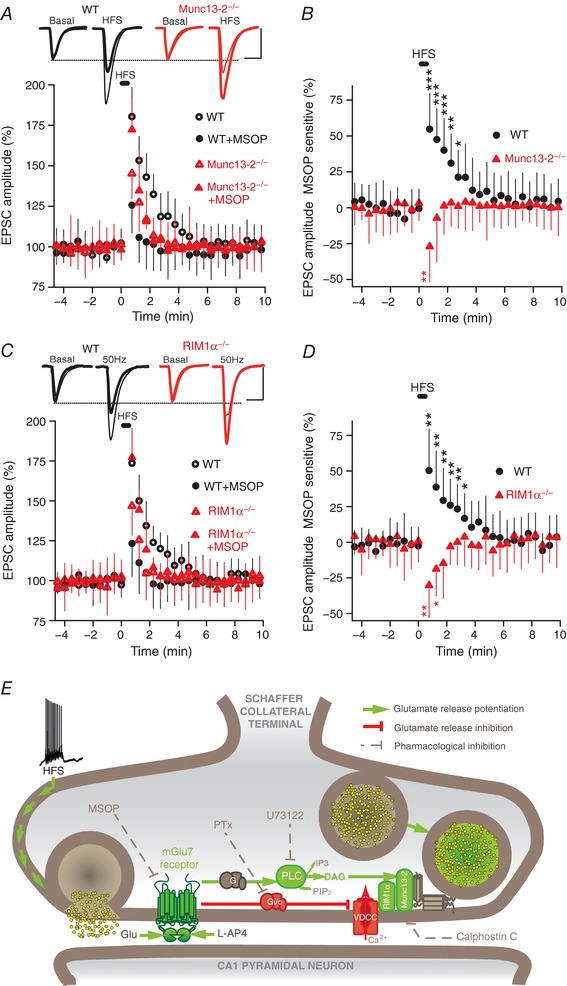Figure 10. The mGlu7 dependent HFS‐induced potentiation is abolished by the lack of Munc13‐2 or RIM1α proteins.

A, changes in the EPSC amplitude induced by two trains (1 s at 50 Hz, every 20 s) in control (untreated) and MSOP (200 μm, 30–60 min) treated slices from Munc13 KO (n = 11 cells/11 slices/4 mice) and WT littermates (n = 11 cells/11 mice/3 mice). B, quantification of the MSOP sensitive component of the EPSC normalized to the basal values prior to HFS. C, changes in EPSC amplitude induced by two trains (1 s at 50 Hz, every 20 s) in control (untreated) and MSOP (200 μm, 30–60 min) treated slices from RIM1α KO (n = 11 cells/11 slices/4 mice) and WT littermates (n = 9 cells/9 mice/3 mice). D, quantification of the MSOP sensitive component of the EPSC normalized to the basal values prior to HFS. Unpaired Student's t test compared to basal values. Scale bars in A and C: 50 pA and 15 ms. EPSC sample traces in A and C represent the mean of 10 consecutive EPSCs at 0.33 Hz 90 s before (basal) and 20 s after HFS (thin and thick traces in the absence and presence of MSOP, respectively). E, scheme of the proposed signalling for the bidirectional modulation of synaptic transmission by mGlu7 receptors. The mGlu7 receptor stimulates a PTx‐sensitive G protein that inhibits voltage dependent Ca2+ channels and decreases neurotransmitter release. The mGlu7 receptors also activate a PTx‐resistant G protein to enhance PLC activity, thereby increasing PIP2 hydrolysis and the generation of DAG. This DAG binds to and activates/translocates the non‐kinase DAG‐binding protein Munc13‐2 to promote glutamate release with the help of RIM1α. DAG, diacylglycerol; HFS, high frequency stimulation; PIP2, phosphatidylinositol bisphosphate; PLC, phospholipase C; PTx, pertussis toxin; VDCC, voltage dependent Ca2+ channel. The blockade/inhibition (dashed line) of Gi/o proteins by PTx, mGlu7 receptors by MSOP, PLC by U73122 and Munc13 by calphostin C is also indicated, as well as the activation (arrows) of mGlu7 receptors with the agonist l‐AP4 or by HFS induced glutamate release.
